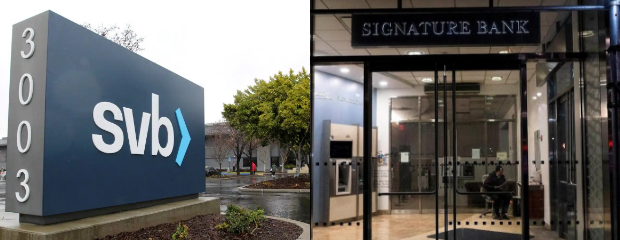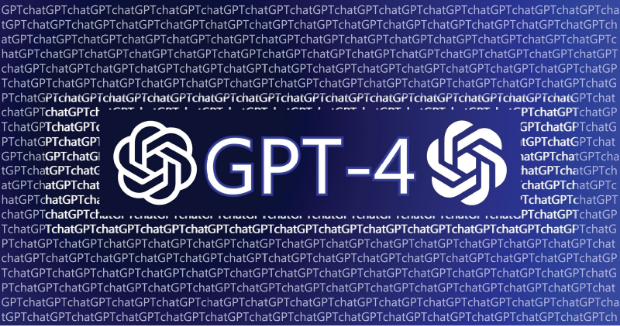Hey Stacker,
💸 Massive US Bank Failures Spark Panic
📈 Credit Suisse witnessing trouble, collapse underway?
🤖 GPT-4 will be more accurate, smarter and wiser
Read Time: 3 mins
1. Prisoner’s Dilemma

Two of the largest bank failures in US history
Silicon Valley Bank and Signature Bank NY were two of the largest banks that failed in the US within three days. This caused panic among depositors, who were uncertain about the safety of their deposits.
Eventually, the US Treasury's decision to bail out Silicon Valley Bank provided a solution to the bank run situation
The Prisoner's Dilemma
The concept of the Prisoner's Dilemma is used to explain the behavior of depositors during a bank run. In this thought experiment, two criminals face a similar dilemma to depositors during a bank run. They can either stay silent and receive a shorter sentence or rat on their accomplice and receive a longer sentence. The same applies to depositors. They can either keep their money in the bank and risk losing it, or withdraw their money and potentially cause the bank to fail.
Importance of communication and trust
Clear communication and trust in institutions are crucial in stopping contagion during a bank run. If depositors receive clear and accurate information from their bank and government officials, they are more likely to trust the system and avoid a bank run. Conversely, if there is a lack of information or misinformation, panic can spread quickly, leading to a bank run.
Our Opinion: The events that have unfolded in the past couple of weeks clearly highlight the fragility of the financial system, which if not supported adequately by via a strong regulatory framework, can implode very quickly. Banking is a confidence game where a bank borrows on a shorter duration and typically lends for a longer duration.
2. The Credit Suisse Fiasco

Credit Suisse shares surge 30% after announcing $54bn loan from Swiss National Bank
Credit Suisse shares rose by more than 30% on Thursday after it announced it would borrow up to $54bn from the Swiss National Bank. The lender exercised its option to borrow under a covered loan facility and a short-term liquidity facility. The Swiss National Bank and the Swiss Financial Market Supervisory Authority stated that Credit Suisse met the capital and liquidity requirements required by systemically important banks. Shares remained up by 21.8% at 10am in London.
Credit Suisse discloses material weaknesses in financial reporting controls
Credit Suisse has acknowledged material weaknesses in its financial reporting controls over the past two years. The bank’s management, including its CEO and CFO, found that the controls were ineffective, meaning that controls around 2021 financial reporting also failed.
Although the weaknesses first emerged in the bank’s 2021 annual report cycle, they were not resolved until last week on the eve of the bank publishing its annual report.
This is the latest setback for the bank, which has been trying to move past a series of costly blunders.
Credit Suisse reassures investors, but market jitters continue
Despite the lapses in financial reporting controls, Credit Suisse assures investors that its financial statements fairly represent the group’s consolidated financial condition. The bank’s CEO, Ulrich Körner, says that the disclosure follows the SEC’s questions and the bank is addressing the situation. However, Credit Suisse’s bail-in bonds have slid, indicating that investors remain concerned about the bank’s financial prospects.
Internal control weakness is a concern for investors
Material weaknesses in internal controls are a cause for concern among investors and analysts, who view it as reflecting badly on a company’s finance function. Although the weaknesses first emerged in the bank’s 2021 annual report cycle, they were not resolved until last week on the eve of the bank publishing its annual report. This development is a reminder that companies are required under U.S. securities law to test and disclose the effectiveness of their controls.
Our Opinion: Credit Suisse, being a systemically important institution, is very likely to be bailed out of its current situation via either a merger with another large entity or by being provided with a regulatory backstop by non other than the central bank. However, its problems at the core, like most other financial institutions have been facing, will only go away with a reversal in the current rate hiking cycle being implemented by global central banks to fight inflation.
3. Introducing GPT-4

GPT-4 Launch Welcomed by Industry Experts and Companies
Microsoft-backed artificial intelligence firm OpenAI has launched GPT-4, the latest generation of its series of large language models. GPT-4 is being evaluated for its business potential and deployment by several firms, including Duolingo, Khan Academy, Morgan Stanley, Haptik and Yellow.ai. The new tool has added six Indian languages, Bangla, Urdu, Punjabi, Marathi and Telugu, providing scope for chatbot makers to add vernacular features into their enterprise products.
GPT-4 will be more accurate, smarter and wiser
GPT-4 uses billions of data points to read written text inputs to generate content, and can also take image inputs and process them in text responses. OpenAI claims that it offers "greater accuracy", "broader general knowledge and problem solving abilities" and "advanced reasoning capabilities". Although it may not immediately gain widespread adoption, experts have predicted that GPT-4 will be popular among customer service, legal, marketing and programming teams.
Our Opinion: Open source AI tools such as Chat GPT are still some time away from mass adoption. However, with time, such tools are very likely to open up fresh avenues for businesses to improve their productivity multifold by being able to automate daily mundane and non-complex tasks, leaving human labour force to focus on more value added activities to enhance growth and productivity as a whole for businesses.





